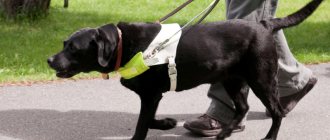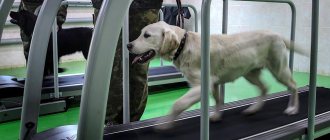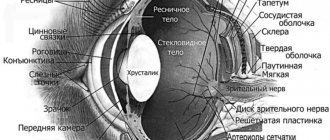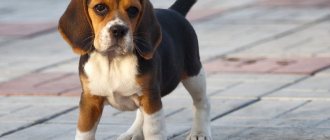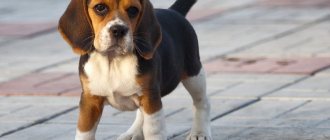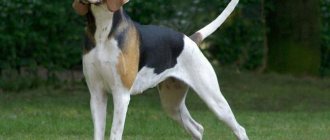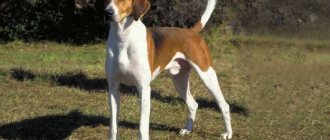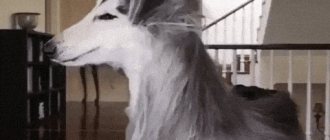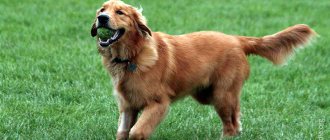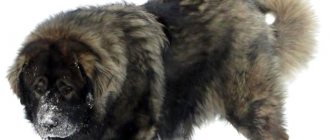A guide dog is an indispensable companion for a person with visual impairments. However, not every breed will be suitable. When selecting applicants, the coach must pay attention to such character traits as:
- easy learning;
- ability to concentrate;
- patience;
- excerpt;
- mental stability;
- friendliness.
Aggression and security qualities are unacceptable for guide dogs. Otherwise, they will pose a threat not only to others, but also to the owner himself. Guides can only warn about danger. Following a given route just half a length ahead, they take into account not only the permitted places for crossing the road, holes and curbs, but also pay attention to branches and low-lying electrical wires. In a word, such a companion for a blind person is simply irreplaceable.
Every dog is subject to education and training, but during long training only a select few remain. Some breeds have gained the greatest popularity due to character traits inherent in nature. However, you have to choose not only based on personal preferences: the dog must be of suitable height so that it is easy for a person to hold the harness. Let us next consider the most popular breeds, proceeding from the tallest to the shorter brothers.
German dog
This is a noble, large dog, which, due to its height (80-90 cm at the withers), is more suitable for adults than for children. They are proud and proud, however, these qualities do not prevent them from faithfully and loyally serving their owner and helping him even in difficult situations. The Great Dane is an easily controlled and trainable, obedient dog. They do not pay attention to external provocations and remain calm and self-controlled, however, they treat suspicious strangers with distrust, protecting the person.
They are not always easy to train: commands are learned slowly compared to other breeds, but if the pet remembers it, then it is forever. It will take 3-4 times to remember the route. A special mindset and sense of responsibility allows you to process a large flow of information, analyze it and make an informed decision. You can undoubtedly trust this dog with your life. Having completed the main tasks, they prefer to relax near the owner, enveloping him with their love and warmth.
Saint Bernard
These large dogs (up to 70 cm at the withers) have the same big and kind hearts, prudence and rescue skills. A kind of hero of our time. Behind the thick fur and deep brown eyes lies excellent self-control and a willingness to always come to the aid of its owner. However, not everyone can find an approach to a St. Bernard - a dog will be able to fully open up and love a person if it becomes a real member of the family. Thus, a person acquires not just a guide, but a true, faithful friend.
Giant Schnauzer
This is a fairly large breed, reaching a height of 70 cm at the withers, so it is more suitable for an adult. In terms of their performance characteristics, they are in no way inferior to the German Shepherd, which is why they are often used for official purposes. Phenomenal memory, the ability to remember a large number of commands, balance and devotion make it possible to grow a Giant Schnauzer into an ideal guide for a person with disabilities. They are a reliable support and support for their owner. As a pleasant bonus, one can highlight their friendliness and cheerful disposition, which means that they will get along well with members of the household, including the smallest ones.
Read Dogs with brown coloring - 20 current breeds
Purpose
Not every dog can become a guide dog. Half of the students drop out during the first classes. Guide dogs must have certain personality traits, including being friendly towards people. The best guides grow from puppies whose parents served as blind people, since their natural qualities are enhanced by genetic memory.
Guide dogs perform the following functions:
- accompany a blind person along the chosen route;
- help a disabled person adapt to environmental conditions;
- ensure the safety of the owner;
- provide psychological support.
When leaving the house, the dog begins to take care of the person so that he does not get into trouble. The dog barks to warn of obstacles along the way, including puddles, traffic lights, benches, stairs, and closed doors. In addition, such animals know how to look for the entrance, the way back from the metro, and pick up things dropped by the owner. Another task that the guide must perform is to remember the most common routes and lead the blind person to the right place without deviating from the path.
Doberman
These active guide dogs require daily long walks and games to maintain good physical shape and health, so they are more suitable for children and young people with visual impairments. It is difficult to imagine the Doberman as a companion and companion, but they have proven themselves well due to their desire for training and balanced character. A calm and friendly dog quickly takes a defensive position if its owner is in danger. They are sociable, but will not bother their owner if they are in a bad mood. They adapt and go through all the difficult moments together, so they become not just a dog leading through the roads and streets, but a real loyal friend. The height of an adult is 65-75 cm.
Bernese Mountain Dog
These are hardy, active, peace-loving and cheerful dogs that are ready to give their blind owner a boost of energy and happiness. However, once on the street in a specialized harness, the funny pet will be unrecognizable. He instantly transforms into an obedient, balanced and reasonable dog, clearly in control of his surroundings. It is quite easy to train, but you have to be persistent.
Features of addiction
Transferring the animal to a new owner is the third and very important stage, which is called habituation. It is at this moment that it becomes clear whether they are suitable for each other. A guide dog spends a long time learning to lead a blind person down the street. During the adjustment period, the dog handler will be close to the dog and the disabled person.
The new owner needs to spend as much time as possible with their pet. A guide dog is no different from ordinary dogs; he also loves praise and will be happy to receive a treat for obedience. This is important to consider during the adaptation stage. You need to talk to your dog as often as possible so that it remembers your voice. Cases where the owner and the dog do not suit each other are very rare.
Chesapeake Bay Retriever
These dogs are real hard workers. They are strong, resilient and tireless, but willful, and for a dog to fully reveal all its positive traits, a firm hand from the owner is needed. Having won the trust of a Chesapeake, a person finds a devoted friend who will become a companion on a long journey and help cope with daily everyday difficulties. They are attentive, kind and active, and these are perhaps one of the most important characteristics for dogs.
Rottweiler
The main quality for which this breed of guide dogs is valued is endless devotion to its owner. Their highly developed intuition, physical strength and speed have made them more than just a companion for many disabled people. They became protectors and guards. Patient and hardy, they will become an indispensable assistant in everyday tasks, and their developed intelligence and quick wits allow them to learn new tasks literally every day. However, the Rottweiler is not suitable for everyone: he has a tendency to dominate, so in order to get along and get along with him, you must have a strong and strong-willed character. When going outside, these dogs must be muzzled.
Read TOP hairless and hairless dogs - 9 breeds with names
The cost of the animal and the right to receive
Guide dogs are provided free of charge to everyone with group I visual impairment. But you will have to wait your turn, which usually takes about 6 months. For those who don't want to wait, you can buy an animal.
The price for a guide dog ranges from 250-400 thousand rubles. The second option is to purchase the animal yourself and send it to training. The cost of training is approximately 60 thousand rubles.
German Shepherd
German Shepherds have long earned a special place in the hearts of dog owners. This is not just a friend, but a real comrade-in-arms, to whom you are not afraid to entrust your life. They will be devoted and faithful until their last second.
The brilliant successes of the German Shepherd in a variety of activities were not slow to attract attention. These dogs perform daily feats as a police or border dog, but are also excellent guide dogs. Cheerful, brave and energetic, they endlessly delight their owners and household members, and their intellectual abilities allow them to learn a large number of commands.
Height 55-65 cm.
Boxer
A formidable appearance, a muscular body, a tall height of 55-65 cm rather causes fear among others, but few people realize that hidden behind the outer shell is the most faithful and kind friend, ready to play with household members and children. Boxers are smart and easy to train, mastering dozens of new commands in a short time. As a guide dog, this breed is suitable for people of average height.
Breeds suitable for the role of guides
In order to become a guide, a dog must have certain character traits. But in reality, in practice you can understand which dogs are guide dogs and which are not.
For the most part, large, hardy breeds are easier to train than other animals.
The best guide dogs are animals with the following character traits:
- Resourcefulness and intelligence.
- Restrained character, the ability to restrain innate abilities.
- Resistance to stress.
- Excellent eyesight and sense of smell.
- Loyalty to the owner.
Tervuren
This breed has the most important qualities for guide dogs:
- training speed;
- obedience;
- attentiveness;
- bravery;
- ability to analyze a situation and make a decision;
- activity and good character.
Having become a loyal friend and support for a person with disabilities, he will become a brave defender. Tervurens prefer to be the only favorite in the family, so it is better to refuse other animals, but they always feel warm love for children.
They have a strong character, so it is important to start raising them from the very first moments of acquaintance.
History of Guide Dog Service
It is believed that dogs have been serving people as guide dogs for hundreds of years. The first mentions of them are found in the 16th century. But professional training schools for guide dogs appeared only four centuries later. In Germany, after the First World War, it was decided in this way to help military veterans. A little later, similar schools appeared in the USA, Great Britain and (after World War II) in Russia.
Thus, the first institution in the USSR was the Russian School for Training Guide Dogs of the All-Russian Society of the Blind, which opened in 1960. The second institution is a charitable organization for dog training.
In regulatory documents, guide dogs are called guide dogs. In many countries, these animals are not subject to restrictions on their presence in transport or public catering areas. Guide dogs even have their own holiday - it is celebrated all over the world on April 26th.
Guide dog - a more correct name for a guide dog, but less familiar
Collie
If you are looking for an intelligent, beautiful and calm seeing-eye companion, you should pay attention to this breed. Kind, loyal and active - they are perfect as a helper for children. They sense a change in their owner's mood and patiently wait to be called for help. Carrying out old commands, learning new ones, and helping the owner give true pleasure to dogs. Originally a herding dog, they will guard and protect their owner, and will remain loyal to him forever.
How is it determined that a dog is ready to be a handler?
After completing the training course, a guide dog must pass an exam, which will involve walking a path with a blind person. The host is the instructor, who is wearing dark glasses. They are accompanied by a second specialist who records errors.
White Yorkshire Terrier: name of the breed
The selection is very strict. This is necessary so that both the instructor and the future owner are confident in safety. A dog for the blind should become the very first assistant and friend.
Note! According to statistics, they often save the lives of their owners. Therefore, quality preparation plays a huge role.
Labrador Retriever
This is one of the most common breeds of guide dogs - more than 80% of people with visual impairments choose them as a companion. They are patient and friendly, which allows them to quickly switch from an instructor to a new owner and quickly establish contact. In addition, their height (50-60 cm) is considered the most convenient for carrying in a specialized harness.
This smart and quick-witted dog is easy to train and remembers new routes, which is an undeniable advantage for this breed. Labradors are long-lived dogs. If they follow the rules of care and provide good nutrition, they live up to 18 years, helping their owner every day in performing even complex tasks.
Golden retriever
Representatives of this breed of dogs are wonderful companions and helpers who are ready to serve their owner day and night. They are sociable and friendly, but at the same time they perfectly sense the mood of those around them and will not impose their company at the wrong time. Smart, flexible, highly intellectually developed, which makes it possible to raise them as a devoted companion. Golden Retrievers are not prone to dominance, so they are perfect for someone who is getting a dog for the first time, but it is important to remember that their coat requires careful care. Height does not exceed 50-58 cm.
Read The best dogs for an apartment - TOP 20 breeds
Raising and training guide dogs
In order for a dog to become a good guide, it is better to start training it from an early age. To raise a puppy that will perform a noble service, volunteers are chosen - educators. As a rule, when an animal reaches one year of age, it is adopted by the organization. Professional and almost daily training begins.
The dog learns to walk at a calm pace in a special harness to the left of the person (the owner will have a cane in his right hand), to bypass (not overcome) obstacles, not to react to external stimuli and make decisions.
After completing the course, the future guide takes an exam. The test consists of completing a route with a trainer who is blindfolded. It is also checked how the dog has mastered the general training course. Since training guide dogs is a long process, animals that fail are often given a second chance - sent for retraining.
And, of course, all guide dogs are sterilized; this has a positive effect on the suppression of instincts and the temperament of animals.
Those wishing to receive a guide dog fill out a form and stand in line; the wait can last about a year. In addition, not every blind person has the opportunity to get the desired pet - schools do not give dogs to people with mental disorders and lonely old people (and anyone who would find it difficult to care for an animal). Formally, the dog belongs to the organization. It is given free of charge and for life, but there are exceptions (the school has the right to check how the animal lives and feels, and to take it away for rehabilitation if necessary).
The introduction of a potential owner to a guide dog lasts for two weeks as part of the training. A blind person also takes the exam - it is important to find out how he will interact with the animal along the route.
In a word, raising and taming a guide dog is not an easy task, but a rewarding one. A visually impaired or blind person receives an animal companion and assistant, which means autonomy and independence.
Hera is part of my life and freedom. She is more than a helper, she is my friend. I trust her in a way that I don’t trust many people. We have a strong connection. Hera saved me once. We were returning from a walk when I discovered that I had lost the keys to the house. I was in a panic. Guide dogs are not very trained to smell and search, and there were huge snowdrifts on the street, but I decided to try the “search and fetch” command. I don’t know how, but Hera managed to find the keys. I kissed her all over!
Olga Lifanova, author of the project “With a dog all paths are open”
https://daily.afisha.ru/relationship/9620-lizyk-zayka-i-sobachiy-snikers-kak-zhivut-sobaki-povodyri/
Airedale
This is an incredibly smart and quick-witted breed that is quite easy to train and remembers new routes. Helping their owner every day, they become irreplaceable guides. They are brave and strong, and with a certain special upbringing they will not show aggression in any way and will be friendly if nothing threatens their life and health. Sociable and overly self-confident, he is more suitable for a powerful person with a strong character.
Methods of preparation for work
The main task of guides is to study and remember routes so that the owner can easily get to the desired point, be it a store or work. In order for the dog to cope with its duties, it is taught the following commands:
- moving in front of the owner, turning;
- stopping when obstacles appear and further walking around (in this case, the dog must notify the owner about the obstacle).
Command training is carried out at training grounds with the help of professional dog handlers. A man holds a cane for the blind in his hands and moves along a trajectory. When an obstacle appears, the command “Stop” is given and the trainer hits the obstacle with a stick. Training is carried out until the animal begins to respond correctly to commands. When the dog learns to cope with these tasks, they move on to the next stage - moving between objects, going up and down stairs, driving along the streets. Students are taught basic commands and the names of various places: house, store, park.
Poodle
The Royal or Standard Poodle grows 45-60 cm and has a kind, unpretentious disposition. A trained dog is suitable even for a novice dog breeder. Observation and interest in interacting with a person facilitates the learning process. They easily remember new routes and unquestioningly and happily follow their owner’s commands. If a person needs the help of a dog, he immediately rushes to the rescue and does everything possible to make the owner happy and satisfied. In addition, they will not let you get bored, actively supporting the games, and are happy to make contact.
Aussie
Aussies have earned popularity for their intelligence and endurance. Balance and quick assimilation of commands allow them to undergo specialized training in the shortest possible time and unquestioningly carry out human commands. They are patient, friendly and good with children. However, their fairly tall stature makes them good companions mainly for adults.
This breed requires careful grooming, and in gratitude they respond with strong friendship and loyalty.
Hungarian Vizsla (Hungarian pointing dog)
With a toned, athletic build, the energetic Vizsla has a reputation as an excellent hunting dog and loyal companion.
Despite his kind, easy-going disposition, this dog is always ready to defend his person. Another advantage of this breed is its ease of training. The dog's intelligence and obedience make it a pleasure to train.
The Vizsla is a very active and hardworking breed that requires a lot of physical activity.
Labradoodle
These intelligent and sociable dogs were bred by crossing a Poodle and a Labrador. They took the most important characteristics from their ancestors: energy and love of life from the Labrador, a soft, easy-going character, quick learning, and most importantly, non-shedding coat from the Poodle. The latter quality allows them to be given to allergy sufferers and children with weakened immune systems.
These dogs cannot imagine their existence without their beloved owner and will fill his life with boundless love and devotion. After completing a course of specialized training, they become excellent guides and warn people from danger.
Russian Spaniel
The Russian Spaniel is perfect for any family. These dogs adapt perfectly to the conditions of a small apartment, quickly get used to it and from the very first seconds begin to help their owner. They are smart, easy to train and will happily follow a command, which is typical of all spaniels. Loyal, kind, reliable, dutiful - these characteristics best describe the representatives of this breed. Small and quite active, they definitely won’t let you get bored and will become an integral part of everyone’s life.
Boundless love for humans, devotion and fidelity make representatives of the listed breeds the best friends who will always help in a difficult situation.

